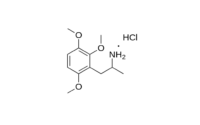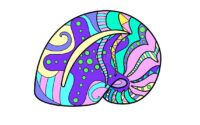TMA-5 User report

Dosage: 30 mg or more.
Duration: 8 – 10 h.
(with 20 mg) There appeared to be a slight stimulation. Modest eye dilation, but normal pulse. If this is the marginal edge of intoxication, then it is not a psychotomimetic, but a stimulant. Go up with care.
(with 30 mg) Intense introspection. Comparable to about 75 micrograms of LSD, or more.
Extensions and commentary: TMA-5, as was the case with TMA-4, has only been superficially explored. The above two quotations are from two different people, and together no more than hint at the possibility that it might be active in the several tens of milligrams.
Pharmacologists have developed quite an art in the design and evaluation of animal behavior models for the study of psychedelic drugs. They have always faced two formidable tasks, however. There is the qualitative question: is the drug a psychedelic? And there is the quantitative question: how potent is it?
The first question is addressed by taking a number of known psychedelic drugs, and searching for some animal responses that are common to all. Since there is little logic in the argument that animals can experience, let alone reveal, altered states of consciousness or fantasy fugues or colored imagery, the investigator must look for objective signs such as conditioned responses to stimuli, or unusual behavior. If one explores ten drugs that are known psychedelics, and all ten produce, say, bizarre nest-building behavior in mice, and an eleventh drug of unknown pharmacology does exactly the same thing, then the eleventh drug can be suspected of being a psychedelic drug.
And the second question, how potent, is answered by seeing how much of the drug is required to evoke this standardized behavior. This is called the dose-response curve, in which the more drug you give, the more response you get. This curve gives confidence that the drug is indeed responsible for the activity that is seen, as well as giving a quantitative measure of that activity.
But this entire discipline depends on the acceptance of the fact that the first ten drugs are indeed psychedelic materials. And these inputs can only come from human trials. What is the validity of these assumptions with TMA-5? Not very good. The statement that it is psychedelic has actually been published in reviews solely on the basis of the above two studies; the potency has been put at some ten times that of mescaline. Mescaline is certainly an effective psychedelic drug in the 300-500 milligram range, and this factor of ten implies that TMA-5 is also a psychedelic drug and is active in the 30-50 milligram range. And indeed, both statements may be true, but confidence in these conclusions must await more extensive trials.
The two-carbon analogue of TMA-5 is 2,3,6-trimethoxyphenethylamine (or 2C-TMA-5 or 2,3,6-TMPEA). This is a known material, although there has been some controversy as to its physical properties. It has been studied in monoamine oxidase systems, and appears to be either a competitive substrate or an inhibitor of that enzyme. But as far as I know, no one has nibbled it, so its human activity is unknown.

